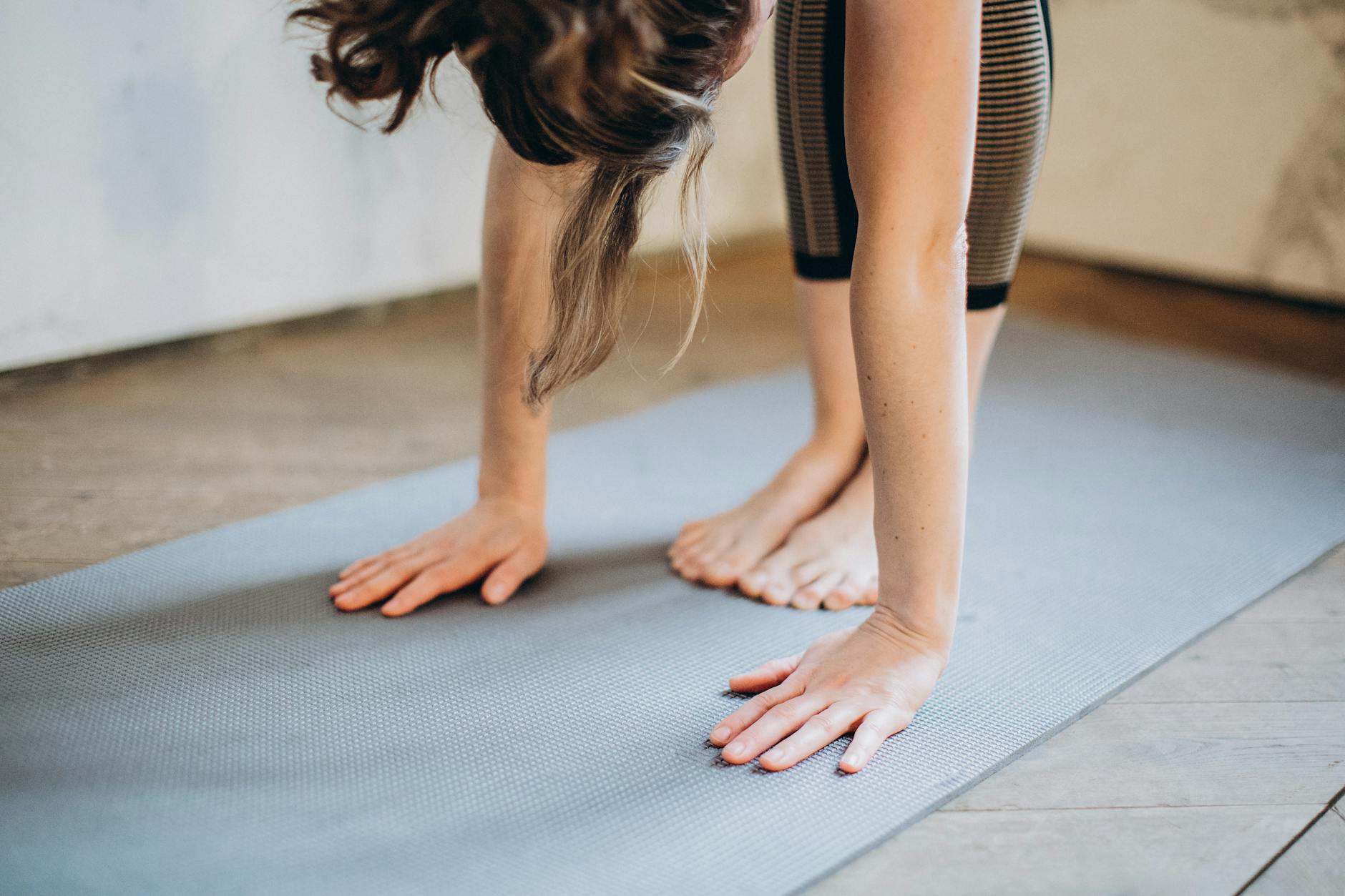Unlocking the mystery of the black and white keys can seem daunting. But fear not! Mastering piano skills is not as hard as it might seem. From your first encounter with chopsticks to performing concertos, each step is a journey of discovery and accomplishment. This guide breaks down the process into manageable chunks, making it easy even for absolute beginners. So, let’s dive into our step-by-step guide and start the amazing journey to becoming a piano maestro.
The Musical Journey Begins
Why Learn to Play the Piano?
The world of music is a fascinating realm, with its diverse sounds and melodies that have the power to transport us to different emotions and places. And what better way to embark on this musical journey than by learning to play the piano? Whether you’re a complete novice or an experienced musician, the piano offers a gateway to a world of endless possibilities.
Learning the piano is not merely about mastering a musical instrument; it’s about unlocking the key to self-expression and creativity. The piano provides a solid foundation for understanding music theory and composition, allowing you to explore and create your own unique melodies. It’s a journey that can be both challenging and rewarding, offering a sense of accomplishment and personal growth.
Benefits of Playing the Piano
Image: Relaxation
Playing the piano is not just a hobby; it’s a holistic activity that brings numerous benefits to your mental, emotional, and physical well-being. Let’s take a look at some of the incredible advantages of playing this magnificent instrument:
- Improves Cognitive Skills: Learning to play the piano stimulates your brain, enhancing cognitive functions such as memory, attention, and problem-solving. It’s like a mental workout that keeps your mind sharp and agile.
- Enhances Coordination: Playing the piano requires the coordination of both hands, as well as the feet when using the pedals. This improves your fine motor skills and hand-eye coordination, which can have a positive impact on other areas of your life.
- Relieves Stress: The soothing sounds of the piano can be a balm for the soul, offering a therapeutic escape from the daily stresses of life. It’s a form of self-expression that allows you to channel your emotions and find solace in the music.
- Boosts Confidence: As you progress in your piano journey, mastering new pieces and techniques, your confidence naturally grows. The sense of accomplishment and pride in your musical achievements can have a ripple effect, boosting your overall self-esteem.
- Fosters Creativity: The piano is a canvas for your inner artist. It enables you to explore different musical styles, experiment with improvisation, and compose your own pieces. It’s a medium through which you can let your creativity run wild.
- Connects People: Music has a unique ability to bring people together, and playing the piano opens doors to collaborative opportunities. Whether it’s jamming with friends, joining a band, or accompanying other musicians, the piano allows you to connect and create beautiful music with others.
In conclusion, learning to play the piano is a remarkable journey that offers a multitude of benefits. From cognitive development to stress relief and creative expression, the piano has the power to enrich your life in countless ways. So why wait? Let’s dive into the enchanting world of music, where your fingers will dance on the keys, and your soul will soar with every note.
Getting Started with the Basics
So you’ve decided to embark on a musical journey and master the piano? That’s fantastic! Whether you dream of playing classical concertos or belting out your favorite pop tunes, this guide will take you from chopsticks to concertos in no time. Let’s dive right in and get started with the basics!
Choosing the Right Piano
 A White Grand Piano (Photo by Nguyen Trung Hieu)
A White Grand Piano (Photo by Nguyen Trung Hieu)
Before you can begin your piano adventure, you need to choose the right instrument. While you may be tempted to opt for a digital keyboard or a compact model, investing in an acoustic piano can greatly enhance your playing experience. The touch and sound of an acoustic piano are unparalleled and can truly elevate your skills.
If you have the space and budget, consider a grand piano for that classic and impressive feel. However, if you’re limited on space or budget, an upright piano is a practical and excellent choice. Whichever type you choose, make sure to test it out and find one that resonates with you.
Understanding the Keyboard
 Fresh flowers decorating work desk with laptop and notepad (Photo by Cup of Couple)
Fresh flowers decorating work desk with laptop and notepad (Photo by Cup of Couple)
Now that you have your piano, it’s time to familiarize yourself with the keyboard. The keyboard consists of 88 keys, arranged in a specific pattern. The black keys are raised and arranged in groups of two and three, while the white keys make up the rest.
Take a moment to study the keyboard layout. Notice the pattern of the black keys and their relationship to the white keys. Understanding this pattern will greatly assist you in navigating the keyboard and playing the correct notes.
Mastering Hand Placement
 Person Holding Film Strip (Photo by Markus Spiske)
Person Holding Film Strip (Photo by Markus Spiske)
Hand placement is crucial when it comes to playing the piano effectively. Proper hand position ensures that you have control and accuracy while playing. Start by sitting comfortably at the piano with good posture.
Place your right hand on the keys, with your thumb on Middle C. Your fingers should naturally curve, with your pinky resting on the rightmost white key. For your left hand, mirror the position on the lower keys, with your thumb on the leftmost white key. Remember to keep your wrists relaxed and slightly elevated.
As you progress, you will learn various hand positions for different musical passages. But for now, mastering this basic hand placement will set the foundation for your piano playing journey.
Now that you have chosen the right piano, understood the keyboard, and mastered hand placement, you are ready to start playing! In the next section, we will cover the fundamental techniques that will help you play your first simple melodies. Stay tuned and get ready to make beautiful music on your piano!
Playing the Keys
Learning the Musical Alphabet
Before you embark on your journey to piano mastery, it’s essential to start with the basics: learning the musical alphabet. Just like the ABCs are the foundation of reading and writing, the musical alphabet sets the groundwork for understanding and playing the piano.
The musical alphabet consists of the letters A through G, and it repeats itself as you move up or down the piano keyboard. Each letter represents a specific note. For example, A is the note that comes before B, and B is followed by C. This pattern continues until you reach G, after which the sequence starts over with A again.
Understanding the musical alphabet is crucial for reading sheet music and developing a strong foundation in piano playing. So, take a moment to familiarize yourself with the letters and their corresponding notes. Once you have a solid grasp of the musical alphabet, you’ll be well on your way to playing beautiful melodies on the piano.
Recognizing Music Notes
Now that you’re acquainted with the musical alphabet, let’s dive into recognizing music notes. Each note represents a specific sound or pitch, and it is depicted by a symbol on sheet music. These symbols, known as musical notes, are circular or oval-shaped and have a stem or tail.
The most commonly used notes in piano music are whole notes, half notes, quarter notes, and eighth notes. Each of these notes has a distinct duration, which determines how long you hold the key. Whole notes are played for four beats, half notes for two beats, quarter notes for one beat, and eighth notes for half a beat.
To read sheet music, you’ll need to identify the note symbols and understand their durations. With practice, you’ll become more proficient at recognizing and playing these notes, allowing you to bring your favorite piano compositions to life.
Practicing Finger Exercises
Now that you’re familiar with the musical alphabet and can recognize notes, it’s time to strengthen your fingers through exercises. Just like athletes warm up and stretch before a game, pianists need to warm up their fingers before playing complex pieces.
Finger exercises help improve finger dexterity, strength, and coordination. They also promote good technique and prevent any potential strain or injury. One popular finger exercise is the five-finger scale, where you play a series of notes using all five fingers of one hand.
To start, place your right hand on the piano with your thumb on the note C. Play C, D, E, F, and G using your thumb, index finger, middle finger, ring finger, and pinky respectively. Then, descend back down the scale by playing G, F, E, D, and C with the corresponding fingers.
Practicing finger exercises regularly will help you build the necessary strength and agility to tackle more challenging piano pieces. So, set aside a few minutes each day to give your fingers a workout and watch your piano skills flourish.
 Woman Bending Her Body (Photo by Elina Fairytale)
Woman Bending Her Body (Photo by Elina Fairytale)
Remember, mastering piano skills is a journey that requires dedication and practice. By learning the musical alphabet, recognizing music notes, and practicing finger exercises, you’ll be well on your way to becoming a proficient pianist. So, let’s dive in and start playing those keys!
Unleashing the Melodies
Music has the power to transport us to a different time and place. It can evoke emotions, spark memories, and uplift our spirits. And when it comes to playing the piano, there’s an entire world of melodies waiting to be unleashed. In this section, we’ll explore the key components that will help you unlock the full potential of your piano skills: understanding piano scales, playing chords and arpeggios, and exploring music theory.
Understanding Piano Scales
 Close up of a Musical Instrument (Photo by Mateusz Dach)
Close up of a Musical Instrument (Photo by Mateusz Dach)
Before we dive into the intricacies of piano scales, let’s take a moment to appreciate their importance. Piano scales act as the building blocks of melodies, providing a framework that guides our fingers across the keys. By understanding scales, you gain a deeper comprehension of the music you play and open yourself up to a world of improvisation and creativity.
When it comes to scales, we often start with the C major scale. This scale consists of eight notes and follows a specific pattern of whole and half steps. Once you’ve mastered the C major scale, you can explore other scales such as the G major or D minor. Each scale has its own unique character, adding depth and variety to your musical repertoire.
Playing Chords and Arpeggios
 Brown Wooden Piano Used by a Person Using 2 Fingers (Photo by Pixabay)
Brown Wooden Piano Used by a Person Using 2 Fingers (Photo by Pixabay)
Chords and arpeggios are like the spices that add flavor to a musical dish. They provide richness and depth to your piano playing, allowing you to create harmonies and convey emotions. Learning to play chords and arpeggios opens up a whole new dimension of musical expression.
Chords are a combination of three or more notes played together, creating a harmonious sound. They can be major, minor, or even more complex, such as seventh chords. By incorporating chords into your playing, you can add texture and complexity to your melodies.
Arpeggios, on the other hand, involve playing the individual notes of a chord in a specific sequence. They create a flowing and melodic effect. Practicing arpeggios not only strengthens your finger dexterity but also helps you understand the structure of chords and their relationship within a piece of music.
Exploring Music Theory
 Hand Playing Keyboard (Photo by Antony Trivet)
Hand Playing Keyboard (Photo by Antony Trivet)
Now that we’ve covered scales, chords, and arpeggios, it’s time to delve into the fascinating world of music theory. Music theory provides the framework for understanding how music works. It helps us decipher the language of music, allowing us to read and interpret sheet music with ease.
By studying music theory, you’ll gain insights into concepts such as rhythm, harmony, and melody. You’ll learn about time signatures, key signatures, and different musical forms. This knowledge will empower you to analyze and interpret music more effectively, enabling you to bring your own unique interpretation to the pieces you play.
To delve deeper into music theory, there are countless resources available online. Websites like MusicTheory.net and Teoria offer comprehensive lessons and exercises to help you expand your theoretical knowledge.
So, let’s embrace the world of scales, chords, arpeggios, and music theory. Unleash the melodies that lie within, and let your fingers dance across the keys, creating beautiful music that resonates with your soul. The piano is your playground, and the possibilities are endless. Let your journey to mastering piano skills be filled with passion, dedication, and a sprinkle of musical magic.
From Chopsticks to Concertos: A Step-by-Step Guide to Mastering Piano Skills
Developing Technique and Style
When it comes to mastering the piano, developing technique and style is crucial. It’s like learning to wield chopsticks with finesse or composing symphonies that leave audiences in awe. In this section, we will explore the essential elements that will help you elevate your piano playing to new heights.
Mastering Rhythm and Tempo
 Teacher and Student Playing Flute Together (Photo by Yan Krukau)
Teacher and Student Playing Flute Together (Photo by Yan Krukau)
Just as a conductor guides an orchestra with precise movements, mastering rhythm and tempo is fundamental to piano playing. It sets the foundation for your performance, allowing you to express the intended emotions of a piece. To improve your rhythm, practice with a metronome, focusing on accuracy and consistency. Start slow and gradually increase the tempo as you build confidence. Remember, even the most complex compositions are built upon a solid rhythmic framework.
Utilizing Dynamics and Expression
 Close up on Child Hands on Toy Piano (Photo by RDNE Stock project)
Close up on Child Hands on Toy Piano (Photo by RDNE Stock project)
Think of dynamics and expression as the colors on an artist’s palette. By varying the volume, tone, and intensity of your playing, you can breathe life into the music and convey a wide range of emotions. Experiment with the different dynamic markings indicated in the sheet music, such as pianissimo (very soft) and fortissimo (very loud). Use your touch to create subtle nuances and emphasize the musical phrases. Let your heart guide your fingers, allowing the music to flow through you.
Improving Finger Dexterity
 Man in Teal Crew Neck T-shirt in Leg Stretch Pose (Photo by Werner Pfennig)
Man in Teal Crew Neck T-shirt in Leg Stretch Pose (Photo by Werner Pfennig)
Having nimble fingers is essential for executing intricate passages and rapid-fire melodies. Like a gymnast perfecting their routine, you can enhance your finger dexterity through targeted exercises. Scales, arpeggios, and Hanon exercises are excellent tools for developing strength, agility, and coordination. Aim for precision and speed, paying attention to each finger’s movement. With practice, your fingers will dance effortlessly across the keys, enabling you to tackle even the most challenging compositions.
Remember, technique and style go hand in hand when it comes to mastering the piano. As you work on your rhythm, tempo, dynamics, expression, and finger dexterity, you’ll find that your playing becomes more engaging and captivating. So, keep practicing, and let your inner virtuoso shine!
Stay tuned for the next section of our guide, where we will delve into the world of music theory and composition. In the meantime, why not check out these helpful resources on piano technique:
Happy practicing and see you soon!
From Chopsticks to Concertos: A Step-by-Step Guide to Mastering Piano Skills
Expanding Your Repertoire
So, you’ve mastered the basics of playing the piano? Congratulations! Now it’s time to take your skills to the next level and start expanding your repertoire. In this section, we’ll explore different ways to broaden your musical horizons and become a more versatile pianist. Are you ready? Let’s dive in!
Exploring Different Musical Genres
Playing the piano opens up a world of possibilities when it comes to musical genres. From classical to jazz, pop to rock, there’s something for everyone. Exploring different genres not only adds variety to your repertoire but also helps you develop a deeper understanding of music as a whole.
Why not start by immersing yourself in the classics? Dive into the timeless compositions of Mozart, Bach, or Beethoven. Feel the elegance of their melodies and let their genius inspire you. If you’re feeling adventurous, venture into the world of jazz and explore the improvisational nature of this genre. Let the syncopated rhythms and soulful harmonies ignite your creativity.
Remember, the goal is not to become a master in every genre but to embrace the diversity of music and incorporate elements from different styles into your playing. This will make you a more well-rounded pianist and enhance your ability to adapt to different musical contexts.
Learning to Read Sheet Music
Reading sheet music is like deciphering a secret code that unlocks the beauty of a musical composition. It might seem daunting at first, but with practice and determination, you’ll soon be able to navigate those black dots and lines with ease.
Start by familiarizing yourself with the basic elements of sheet music. Learn to recognize the treble and bass clefs, notes, key signatures, and time signatures. Practice sight-reading exercises to improve your fluency and speed.
Don’t forget to take advantage of technology too! There are plenty of interactive apps and websites available that can help you learn to read sheet music in a fun and engaging way. These tools can provide visual and audio assistance, making the learning process more enjoyable and effective.
Memorizing Piano Pieces
Playing a piano piece from memory not only allows you to showcase your talent but also enables you to connect with the music on a deeper level. Memorization helps you internalize the piece, making it easier to express your emotions and add your personal touch.
To memorize a piece effectively, break it down into smaller sections and practice each section separately. Pay attention to the structure, melody, and rhythm of the piece. Use mnemonic devices, such as visualizing the notes on the keyboard or creating mental images that represent different sections of the music.
Repetition is key. Practice the piece daily, gradually increasing the tempo until you can play it confidently from memory. Additionally, try playing the piece in different keys or transposing it to challenge yourself and further expand your musical abilities.
Remember, the journey of expanding your repertoire is not a race but a delightful adventure. Take your time, enjoy the process, and savor each new piece you learn. Happy playing!
 Grayscale Photo of Piano Tiles (Photo by Pixabay)
Grayscale Photo of Piano Tiles (Photo by Pixabay)
Next Section: Mastering Technique
Perfecting Performance Skills
Overcoming Stage Fright
 Free stock photo of boat, cruise, harbor (Photo by Mike Kit)
Free stock photo of boat, cruise, harbor (Photo by Mike Kit)
Are you ready to take the stage and wow your audience with your piano skills? Well, almost ready. The only thing standing between you and a flawless performance is that pesky stage fright. But fear not, because I’m here to help you conquer those nerves and step into the spotlight with confidence!
Stage fright is a common phenomenon that even the most seasoned performers experience. It’s that feeling of butterflies in your stomach, sweaty palms, and a racing heartbeat that threatens to derail your performance. But with a few simple techniques, you can turn those jitters into positive energy that enhances your performance.
One effective way to overcome stage fright is through deep breathing exercises. Take a moment before you go on stage to close your eyes, take a deep breath in through your nose, and exhale slowly through your mouth. This simple act can help calm your nerves and center your focus.
Another helpful strategy is visualization. Close your eyes and imagine yourself on stage, playing the piano flawlessly, and receiving thunderous applause. By visualizing success, you can boost your confidence and reduce anxiety.
Remember, the audience is rooting for you! They want you to succeed and enjoy your performance. So, instead of viewing them as judgmental critics, think of them as your biggest fans. Embrace their energy and let it fuel your performance.
Effective Practice Techniques
 High angle young attentive female artist in casual clothes and headphones gluing paper using paintbrush while creating picture during lesson (Photo by Bruno Bueno)
High angle young attentive female artist in casual clothes and headphones gluing paper using paintbrush while creating picture during lesson (Photo by Bruno Bueno)
They say practice makes perfect, and when it comes to mastering the piano, practice is indeed the key. But not just any practice will do. To truly perfect your performance skills, you need to employ effective practice techniques that maximize your progress.
One such technique is breaking down your practice sessions into smaller, focused segments. Rather than mindlessly playing through a piece from start to finish, isolate challenging sections and work on them specifically. This targeted approach allows you to tackle difficulties head-on and make significant improvements.
Additionally, utilizing a metronome can greatly enhance your practice sessions. Playing with a metronome helps develop a strong sense of rhythm and timing, which are essential for a polished performance. Start at a slow tempo and gradually increase the speed as you become more comfortable.
Recording yourself during practice is another valuable tool. By listening to your recordings, you can identify areas that need improvement and make necessary adjustments. It’s like having your own personal coach, providing feedback and guidance to help you refine your skills.
Performing with Confidence
 Gray and Black Galaxy Wallpaper (Photo by Pixabay)
Gray and Black Galaxy Wallpaper (Photo by Pixabay)
The final piece of the puzzle in perfecting your performance skills is exuding confidence on stage. When you step out to perform, you want to radiate an air of self-assurance that captivates your audience. So, how can you achieve this level of poise?
First and foremost, preparation is key. The more you practice, the more confident you will feel in your abilities. Knowing that you have put in the time and effort to master your pieces will give you a solid foundation to build your confidence upon.
Another effective technique is positive self-talk. Before you take the stage, remind yourself of your accomplishments and strengths. Replace any negative thoughts or doubts with affirmations such as “I am a talented pianist” or “I am ready to shine.” This positive mindset can work wonders in boosting your confidence.
Lastly, embrace the power of body language. Stand tall, maintain eye contact with your audience, and project your energy outward. By adopting a confident posture and engaging facial expressions, you will not only appear confident but also feel more confident within.
So, are you ready to conquer stage fright, master effective practice techniques, and perform with unwavering confidence? With these tips in your repertoire, you’ll be well on your way to becoming a piano virtuoso. Stay tuned for more expert advice in the upcoming sections!
Conclusion
In conclusion, the journey from chopsticks to concertos in mastering piano skills is an exciting and fulfilling one. By following a step-by-step guide, you can develop your musical abilities and become a maestro on the keys. Remember, practice is key, and consistency is key to unlocking your full potential. Whether you’re a beginner just starting out or an intermediate player looking to refine your techniques, this guide has provided you with the necessary tools and tips to succeed. So go ahead, tickle those ivories, embrace the beautiful melodies, and let your fingers dance across the keyboard. With determination, dedication, and a dash of musical passion, you can take your piano skills to soaring heights. Happy playing!
